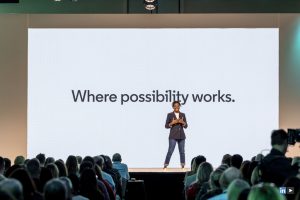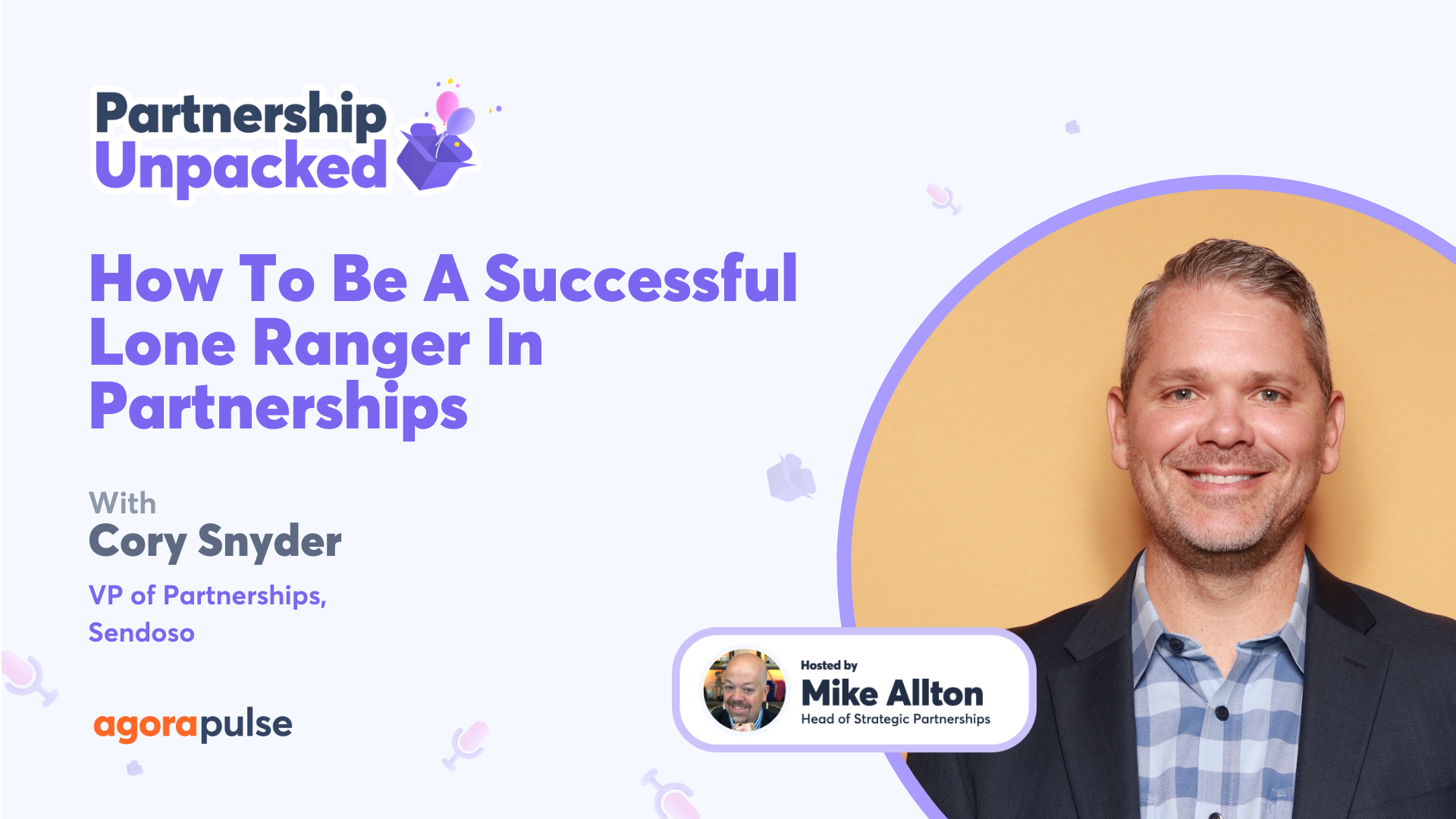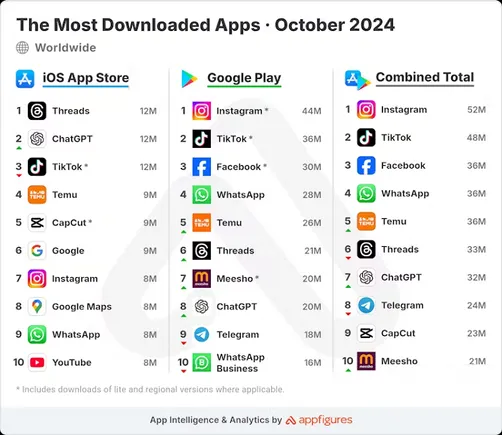Are you the only partnership professional in your organization?
Are you struggling to demonstrate value to your team and organizational leadership?
Are you tired of recruiting new partners only to see those relationships fizzle out?
That’s what we’re covering in today’s episode of Partnership Unpacked.
Welcome back to Partnership Unpacked, where I selfishly use this time to pick the brains of experts at strategic partnerships, channel programs, affiliates, influencer marketing, and relationship building… oh, and you get to learn too! Subscribe to learn how you can amplify your growth strategy – with a solid takeaway every episode from partnership experts in the industry.
But today we’re going to shake things up a bit and do things a little differently.
So, in a previous episode we talked to the amazing Sam Yarborough about her partnership work and experience with PFL and Salesforce and, coincidentally, she talked about my guest today, and he just happened to be one of my next scheduled guests, so we’re going to do something different. Instead of all-new questions, I decided to listen to that great interview and base the next few questions on it. We’re going to drill down into a number of things he talked about, so for those of you listening, I highly encourage you to listen to the chat with Sam and Jason Yarborough on Friends With Benefits, episode ten, the link is in the show notes. Then come back here and listen to the rest of my interview with Cory Snyder.
Cory is the VP of Partnerships at Sendoso and has been in this industry for decades. He’s seen new technology and new mindsets be developed and, all the while, maintained his commitment to excellence and successful methodologies. He’s worked tirelessly to create, launch, accelerate and scale partner & sales organizations, and was awarded the Partnerships Leader of the Year in 2022 by PartnerStack.
Partnership Unpacked host Mike Allton talked Cory Snyder about:
♉️How to develop a daily routine to support partnership success
♉️How tools like Reveal create opportunities for revenue growth
♉️How to measure & communicate success as a Lone Ranger
Subscribe to the show calendar: agorapulse.com/calendar
Learn more about Cory Snyder
Resources & Brands mentioned in this episode
Full Notes & Transcript:
(Lightly edited)
Mike Allton: Are you the only partnership professional in your organization? Are you struggling to demonstrate value to your team and organizational leadership? Are you tired of recruiting new partners only to see those relationships fizzle out? That’s what we’re covering in today’s episode of Partnership Unpacked.
This is Partnership Unpacked, your go to guide to growing your business through partnerships quickly. I’m your host, Mike Allton, and each episode unpacks the winning strategies and latest trends from influencer marketing to brand partnerships and ideas that you can apply to your own business to grow exponentially.
And now the rest of today’s episode.
Welcome back to partnership unpacked where I selfishly use this time to pick the brains of experts at strategic partnerships, channel programs, affiliates, influencer marketing, and relationship building. Oh, and you get to learn to. Subscribe to learn how you can amplify your growth strategy with a solid takeaway every episode from partnership experts.
In the industry. But today we’re going to shake things up a bit and do things a little differently. So in a previous episode, we talked to the amazing Sam Yarbrough about her partnership work and experience with PFL and Salesforce. And coincidentally, she talked about my guest today. He just happened to be one of my next scheduled guests.
So we’re going to do something. Instead of all new questions, I decided to listen to that great interview and base the next few questions on it. We’re going to drill down and a number of things he talked about. So for those of you listening, I highly encourage you to listen to the chat with Sam and Jason Yarbrough on friends with benefits, episode 10, the link is in the show notes then.
Come back here and listen to the rest of my interview with Cory Snyder. Cory’s the VP of partnerships at Sindoso and has been in this industry for decades. He’s seen new technology and new mindsets be developed and all the while maintain his commitment to excellence and successful methodologies.
He’s worked tirelessly to create, launch, accelerate, and scale partner and sales organizations, and was awarded the partnerships leader of the year in 2022 by partnership deck. Hey, Cory, welcome to the show.
Cory Snyder: Yeah. Thanks for having me on. And that was a nice intro. Thank you.
Mike Allton: Yeah. Yeah. Well, you did it. I’m just talking about what you’ve done and I appreciate that.
And I know at the, at the time of this episode being aired, you’re no longer with Sendoso. So tell me about what’s going on there.
Cory Snyder: Correct. Yeah. So I’ve had the, I have the opportunity. I love building. I love building things. I love rebuilding. And so, um, I’ve been given the opportunity to do so with teamwork. com And, um, luckily enough, Logan and I and even Beau Brooks, and we’ve known each other since inbound last year, where he’s like, Logan’s like, can I pick your brain? We’re building an agency, bro. Can I pick your brain? I said, sure. And over the course of like the last like 12 months or so, I’ve been helping Logan kind of answer questions.
What I would potentially do if I was in his seat. And so, you know, full circle. Inbound, uh, a year later and, uh, We’re at a point where it’s like, Hey, come work with us. Let’s, we have about 40 partners. Let’s build the heck out of this thing from agencies and tech. And I said, you know what? Let’s do it. So as of October 3rd, I’ll be heading up teamwork.
com’s partner program to really scale it with Logan and several
other people. So, yeah.
Mike Allton: That’s fantastic. Again, we’ll have the notes in the links in the notes to teamwork and Logan and all the work that you’re doing there. But tell me a little bit more just so we can kind of level set everyone who’s listening who’s maybe not familiar with you.
How did you even get into partnerships in the work that you’re doing today?
Cory Snyder: Oh, good question. So in 2008 or so I started with a company called infusion soft. It’s now called keep and um, Throughout that entire time. I really loved the whole relationship and and uh, Even through my entire sales career half of the deals I would close Would come from people calling me back six months a year later um Because I built these relationships with them and and it was a really weird Phenomenon where I would get somebody to call me back and say hey cory we’re ready to buy and it was like six months Ago that we had talked.
Um, so I got So I was going through this process where I was in sales, I’m extremely competitive and I was the number one sales rep at Infusionsoft for several years and then I realized, you know what, I could probably do something better. I could probably do this process better, like I have a high conversion rate, I can compete with everybody, I can get the same leads everybody else is doing or I can build out my SGL network, my self generated lead network and so that’s what I started doing. I started listening to my prospects like oh, who else are you working with? Who are you talking about? What are you using an agency? Are you using this tech company? Are you doing this? I started asking some a little bit different deeper questions around their world and hey, how did you hear about us?
Oh, I heard you I heard about you from this individual. So I started reaching out to those individuals And so I just started saying, Hey, this person was referred to us by you. I’d love to work closer with you. So you have a direct point of contact to when you want to refer somebody over, you know, you got the top guy, you got the one that’s been here at the company for a long, long time.
I’ll make you look good. If it’s not the right benefit or, or a solution for the person, I’ll point them in the right direct right direction and so on, and I ended up building out. 30 partners that were literally generating leads for me every single month. And I created a process where all they had to do, I built an email that said, Hey, I’d like to introduce you to Cory.
Cory is so and so and Cory, I’d like to introduce you to so and so who is blah, blah, blah. And all they had to do was fill out that quick template and send me an email. And then at that point in time, I’d load them up into the partner program. So they got the commissions that they needed, but it did, it just said, send me the email.
So I ended up, uh, getting to a point where in about 2010, 2011, this really started getting some views, uh, from the leadership team. Like how the heck is Cory gapping the rest of the sales organization by two months in a year of action. And I was like, I just built my own partnerships. I just built my own relationships, right?
Didn’t know, I just know, I was trying to do it. I was competitive and I was trying to create my own, you know, network. So about 2011 or so, 2012, they said, Cory, we’re going to start a partner fund, do you want to do it? And I said, hell yeah, let’s go. And that’s, and… History has been sent. That’s,
Mike Allton: that’s fantastic.
And I know your, your time at Sendoza, you were a team of one. What was that like? I mean, I know what it’s been like for me. Well, what was that like for you and what kind of tools or techniques have you adopted to help you accomplish? What is essentially the equivalent of several people?
Cory Snyder: Yeah. What’s great about, so caveat, what’s great about having and being a team of one and potentially had been, so I had a team, so I had.
Um, two individuals that worked with me and then through just the tech downturn, it went down to just myself. It forces you to think, how do I methodically go about doing my business? How do I methodically, uh, work with my tech partners? How do I scale at a faster rate as far as like, um, a process that not only that I can hold on to, but that a partner can hold on to?
What are the steps? What do we do? How are we doing it? And so it forces you in this way of saying, okay, I can’t just willy nilly everything. I can’t just off the cuff work with this part because there’s no way I can track it. There’s no way I can be effective doing that. So it forces you to say, okay, I need to come up with a methodology.
How do I work with agencies? How do I scale agencies from the first conversation all the way through to them actually scaling, referring, and onboarding clients? Then how do I work internally? What’s my methodology internally with marketing and sales and success? And then my tech company, same thing. How do I onboard them and methodology around?
First step. So it’s like, okay, let’s connect reveal. Let’s go through the process of looking at overlaps and bow, bow, bow. And so that’s what it forced me to do is really tighten up my methodology and onboarding, enabling partners. And it’s, it’s been one, a very massive eye opening process. And it’s in a way I’m thankful that I am a team of one, but now that I have the methodology and the process in place, now I’m thinking like.
I could scale this. I could go so much faster if I can get some head count. And so that’s, that’s the benefit. If you think about it in the other way of like, what’s the opportunity here to set myself up for success and scale versus like this sucks. Um, and it, it does suck. Don’t get me wrong. I have 300, 400 partners and it’s me.
So if that answers your question.
Mike Allton: Yeah, that definitely answers my question. And uh, yeah, I really did. So hard to what you just said, I had to laugh out loud. Uh, yeah, we’ve got hundreds of partners at Agorapulse from, uh, ambassadors and affiliates to brand ambassadors, uh, brand partners and tech integrations.
And yeah, that’s, that’s a lot to manage. But now in the interview. You talked about building relationships that make money together. And the three things that you focus on every day, and for those who haven’t a chance to listen, it was creating pipeline, moving pipeline, and reactivating pipeline. And first of all, I just love that you are thinking about your partners in that pipeline, kind of visualization, because a lot of us who are new to the industry, we’re not yet taught or trained or experienced enough to think about it that way.
But you are, so that was implied there. But can you elaborate on what you meant by that and how that was working for you at Sendoso?
Cory Snyder: Yeah, good question. So I try to look at my partner programs to solve a pain point both externally and internally. So when you look at, um, an extension, how do I build a partner program that’s an extension of our marketing team so that you’re in a way create pipeline, right?
So I create a referral partner program or affiliate program. To me, that’s an extension of our marketing team that is creating pipeline. Arguably, you could say also your agencies and resellers. Thank you. Same thing depends on how you build out that program and if they’re selling the deal, you know, at that point in time, it’s a little bit different.
But, but you’re right. So we focus on creating pipeline moving pipeline, which is heavily where we use, um, reveal and cross beam to kind of look at overlaps. How do we, how do we pull a partner into, uh, that has a customer that is our prospect or opportunity and has account executive leverage that relationship, that partnership to, you know, Ask them who the decision maker is, what’s the buying process, um, any struggles or things we should know about that they may push back on, as well as, the last thing is like, would you write an email, a ghost email on our behalf?
I’ll give you the content. So create pipeline, move pipeline, and reactivate pipeline, which is probably one of my favorite things to do. The reason why is not because of the tech downturn, not because of the struggles we’re having on everybody getting pipeline, but It’s already hard enough to get pipeline, whether you’re in a takedown turn or not, to just dump pipeline.
And when a new, and when you have a new sales rep that leaves and somebody gets a new pipeline, they dump it all. A lot of it they dump. And it’s like, why would you do that? Why would you not leverage your partners to potentially dive in a little bit deeper and reactivate or multi thread? What if you’re talking to the, uh, senior manager of marketing versus the CMO, but our partner has access to the CMO.
So this is all the things I’m trying to teach our account executive to say, okay, you already know about multi threading. Why would you not leverage your partner to multi thread? Why would you not pull that information in? And so really it’s, uh, conceptually the idea between these three things is one, how do I get adoption internally?
And then how do I drive external adoption? Right? And too many times we only think as partner leaders, like, how can I get my partners to do more? How can I get my partners to do more? Whereas I’m thinking about how do I get our marketing team to do more with our partners? How do I get our sales team to leverage our partners in pipeline or SDRs to leverage our partners to create pipeline?
How do I leverage our partners to reactivate dead pipeline? And then how Obviously, there’s a whole different things like, okay, how do we better the other story and everything else? But that’s my internal focus. Like how do I get adoption internally? And then externally, I look at how do I get adoption external?
How do I get partners to do the same thing to us? How do I get partners to reach out to me and say, Cory, this is your customer. Can you give my sales rep some insider Intel? Absolutely. Here’s the CSM and account manager that’s owning that account and so on. So really it’s, it’s kind of twofold, but that’s the goal is like we have to be attached to revenue as partner leaders.
If we’re not, you risk literally losing your job. Um, and. If if you can connect yourself to creating pipeline, moving pipeline, reactivating pipeline at that point in time, it’s an easy way of articulating impact. You’re making with an organization. Not only that, you build internal champions. So all of the individuals that are saying.
Um, things like two months ago, one of the AEs came up to me and said, Cory, every deal I closed last month was because of you and your partners. Thumbs up. I’m like, please go post that in the spot. Not me. Go post. Thank you HubSpot for all the help. That’s what I want you to do. Right? So that’s conceptually the reason why I did it.
But that methodology was forced on me because again, I’m a lone ranger, right? I need to figure out what my methodology is and how I articulate internally what impact I’m making.
Mike Allton: Yeah. I’m smiling and nodding the entire time you’re talking because this is exactly what we’re actually implementing today.
So we’re, we’re nowhere near being able to accomplish what you’ve accomplished, but that’s what we’re creating internally at Agorapulse. We’re also at the same time building a new outbound sales team, which we’ve never done before. We’ve always done inbound. So it’s exciting, scary, anxious, overwhelming. A lot of things happening here, but you’ve, you’ve spoken of your own methodology for achieving success, not just for yourself, but for your partner, which entails using tools like reveal, which we’ve thankfully talked about many times on this show, and we love it.
It’s identifying overlaps, which then leads to pipeline development. And you, you briefly mentioned finding the customer story. What did you mean by that?
Cory Snyder: So there’s, so you have really a couple of ways of like going to market with a partner. So there is a level of better than the other story, which is, um, to give you a perfect example, we would partner with, uh, or let’s say we were wanting to double down with a company like influitive or even like HubSpot or Gong or whoever, maybe, right.
We already have the integration done. The hard work’s already done. And by the way, you don’t even need an integration 99 percent of the time to go to market with a tech partner. I can explain that as well. But ultimately, let’s say we wanted to double down on that relationship. We connect reveal. What reveal gives us the opportunity to look at is to say, what customers do we have in common?
We then take those customers and we say, okay, who’s crushing it together, right? Who’s crushing it with Influitive and, and Sendoso. And then what we do is we create that. We reach out, we give, I give that to my customer marketing person. And I say, Hey. This is a really good customer leveraging our platform and our partner’s platform.
Can you go do a customer story, a case study for me? They’re like, hell yeah, let’s go. So that’s what I started doing is I started lining my customer marketing team up with opportunities to go do customer stories with the integrations and with the partnerships that I had. We can do the same thing with agencies if we wanted to, but ultimately you have to lead the charge to create these better together stories.
Then from there you can, you can do a ton of fun stuff, right? You can then take that in that info. You can run into a playbook with your partner, which is a piece of content that then rolls into a webinar. You pull the customer into the webinar. Now you have a, uh, webinar with the customer story, a use case as well as the other partner.
So there’s a lot of cool stuff that can come from just taking that again methodology of like onboarding. Let’s look at customers in common who are awesome customers. Pass that to your marketing team to run with. You then double down on your prospects, their customers, and their, and their, and our customers, and their prospects, and da, da, da, da.
But that’s ultimately how I’ve done it, as I’ve said. First and foremost, let’s not waste time. Let’s also not try to do it ourselves. Let’s just find like three customers that are super successful with both platforms. Let’s give that to my marketing team. Let’s give that to your marketing team. Let’s have our marketing teams work together.
And let’s create a simple case study. And once you have that, now you can go to market.
Mike Allton: Fantastic idea. I love that. Not only are you creating a customer story, which we’ve talked about many times on this show, and we’ve talked about elsewhere in general marketing channels, going to your customers with stories of how other customers just like them are succeeding with your product is the absolute best way to win.
So that’s a great way to approach. It’s a great way to highlight that relationship with your partner. And I also love that subtle tactic in there, which was you hand that information to the marketing team. So wait, you didn’t try to create the case study yourself. Oh my gosh. No, you brought it to your team and you let the team do what they’re good at doing and you continue to find those relationships.
Fantastic.
Cory Snyder: Well, by the way, you have an internal champion on customer marketing for partnerships. Check.
Mike Allton: Now, you mentioned you don’t have to have a tech integration. Yeah,
seriously.
Cory Snyder: Yeah. So what was holding up a lot of this stuff and like going to market with a lot of tech companies was like, Oh, we need integration, integration.
And I started like thinking about like, we already integrate with a ton like HubSpot and Salesforce and everything up. I would say top, our top, our top six partners, three of them. We don’t have a direct integration with. All the data passes through what we’d consider middleware. Now, not middleware is Zapier and PySync and things like that.
Trey, we’re caught up. Middleware as in just somebody in the middle that’s passing data to accomplish the goal, which is usage, right? So what I mean by that is you look at Sixth Sense. Six Sense. We drive 90 percent of our relationship with six cents goes through salesforce. Role works goes through HubSpot.
Demand base, both. Like, but for me, I just reach out to the partner and they’re like, we don’t have bandwidth integrations. I’m like, that’s fine. Who do you, who do you already have an integration with? Oh, we already have an integration with HubSpot. That’s how we’ll go to market. Just like that. And so it allows you to, to build your data in case around why an integration makes sense.
So now you go to market, you build up the use case, you find the customers that are using, um, your partner HubSpot, Salesforce and, uh, Sendoso or whatever it may be. And then at that point in time, you build the data around why they’re successful. You create content use cases around it. And then all of a sudden you have data that says six months later.
This is what the customers are doing, and this is what the customers are asking for an integration. Now we have data to say it’s worth it, right? And that’s how you, how you do it, but it doesn’t slow you down. You can still go to market.
Mike Allton: Love it. Yeah. And that’s, that’s where we’re headed. Hopefully. So I’m glad you brought that up because we’re talking about the integrations at Agorapulse that we’re going to do over the next Six quarters, the CRMs, Salesforce, and HubSpot, absolutely top of the list.
But what, what comes after that is, is a big question mark right now. And it’s a hundred percent helpful to me. Thank you for illustrating how I can still work with many of our tech partners and future potential tech partners, as long as they’re integrating with a HubSpot or a Salesforce as are we at that point.
So that’s fantastic friends. We’re talking with Cory Snyder about how some really core attributes for setting up a partnership program within your business that drives measurable results. But here to talk to us about another channel you should be looking at for your marketing is Darryl Praill, CMO of Agorapulse.
Darryl Praill: It’s the Arc de triomphe. Can you imagine if you’re in charge, if you’re the CMO? of marketing Paris. What are your main channels? Well, there’s the Arc de Triomphe. There’s the Eiffel Tower. There’s the Louvre. Those are your channels you’re going to use to drive tourism dollars in. Okay, now, but you’re not the CMO of Paris.
In fact, you’re the CMO of your company product service. So what are your main channels? Well, I’m going to guess the things like pay per click, maybe trade shows, events, maybe content. Those are all pretty predictable, right? Let me ask you this question. Are you treating social media as a main channel? By the way, only 1. 8 percent of you today measure social media and can prove an ROI in that investment. HubSpot and Gartner say social media is the number one channel to invest in this year. Are you doing it? If not, I can tell you why. You’re not doing it because you don’t have the tools. You don’t have the mentality, and that’s okay.
We’ve got you covered. You change the mentality, we’ll give you the tool. AgoraPulse tracks all the ROI for you. One place to manage all your social media activity. Your number one channel. Change your success. Treat social media as a channel. One CMO to another. My name is Darryl. I’m with the AgoraPulse. I’ll talk to you soon.
Mike Allton: Talked about how you’re a Lone Ranger like me and giving assist to marketing and webinar guests and assist to sales with pipeline development. I know you’re even giving assists to customer success with renewals, right? How are you measuring all that impact company wide?
Cory Snyder: That’s a good question. So we leverage Salesforce and basically built out Salesforce to, um, we used to track two things, simple two things, which was sourced and influenced.
Um, to me, that just wasn’t good enough, specifically on the on the source side, and arguably it’s still not even good enough on the influence side. I’ll explain. So source source means that we got it from the partner, right? Net new. There are avenues of which you get it from the partner that are not necessarily equal.
So submitting a part, submitting a lead could be sourced. An event that we do with a partner that generates a net new, so let’s say just a happy hour or something like that. To me, that is sourced. Um, it is with the marketing team, but at the end of the day we did it together. Still consider source. But either way, I want to track that separately than influenced.
I want to track that separately than source or submitted. Um, and then on top of that, the last thing is affiliate links that is sourced. Thank you. But I want to be able to track how successful links are. So basically what we did is I broke it up to saying, okay, source, the way we look at it is events, link and submitted.
And from there we now can see conversion rates and success from those different avenues that we would consider sourced. And we still talk about it that way, but in the end I break it out and I say, my conversion rate on events is this, my conversion rate on links is this, and so on. Like submitted.
Obviously, conversion rate is super high, and we kind of knew it would be influenced, though, can also be broken out. And I was in the process of doing that. Um, it can be broken out between, um, the, uh, a e holding a partner in to an opportunity. It’s already created opportunity. Arguably, they’re influencing the movement of that, right?
So that’s one. Um, we track gone calls. Every Friday I listen to gone calls, which is a really good exercise. By the way, as partner leaders, you should be listening to calls that your partners are mentioned by the third party and arguably even by your team, yourselves, reps at SDRs. So I listen to those gone calls.
And if our partner is mentioned more than three times or says. I was referred by blank. I’ll go in there and I’ll check influenced. If it says it was referred by partner, I will go and I will check, uh, I will check, uh, submitted or something along those lines to be sourced. So that’s the benefit of listening to the gong calls.
You can’t rely on humans to do that, especially a sales rep who’s actively in a sell cycle. They’re not thinking about like, Hey, I need to go check that box. So influence can be broken down even further, but we use gong as far as that is concerned to say, So That’s influenced, right? They mentioned our partner three times.
They said HubSpot, HubSpot, HubSpot, which means we are influencing that conversation and we’re influencing the movement of that opportunity and that articulated. The reason why I’m doing that is because you have to articulate it correctly. You’re not influencing revenue. And as soon as you say I’m influencing revenue, you’re going to get in trouble.
The executive team and others are going to push you down and say, no, you’re not. So I started just saying, um, I am moving pipeline. I am influencing the conversation, which technically ties the revenue. So I still get the revenue like attachment. But I’m just not speaking to it that way. Um, so that’s the way, that’s the way that I’ve broken it down here.
But I think there’s areas of opportunity to break it down and eventually you’re going to get too granular. But at least you’ll have the data to say, okay, where can I… Bring it back to just like three different, um, markers, if you will. So that’s, that’s the way I look at it. If that’s helpful.
Mike Allton: Very helpful.
Two really great tips, at least for me personally, that are coming out of that. First, we’re just starting to track partner influence versus partner source. We’ve never done that before to AgoraPulse. Um, so that’s as granular as we’re about to get starting like immediately. Uh, but to your point, you know, I should be looking at even even further.
And the second point you made that was brilliant was instead of me trying to make the claim that I’m influencing revenue. If I say I’m influencing pipeline, that’s, it’s inarguable, right? That’s absolutely happening. So fantastic.
Cory Snyder: Yeah. And the last thing I would say is like influence for the most part has been like a really interesting topic of late, um, because for the most part, everybody looks at it as a fluff metric, which arguably if you, if you communicate it the way that most people do, like, Oh, I influence this much revenue.
It absolutely is. Unless. You can move it unless you can play with it. So influence, if you think about it from the Gong perspective, right? They mentioned our partner three times on a call. So give an example. I just sent out like 190 succulents to HubSpot, CSMs, some sales reps and so on. Honestly, the only reason I sent out just to say thank you for being a customer and partner.
I just want to say thank you, but also there’s a test in there. There’s a test in there to see, like, if I send these out, things that say Sendoza loves HubSpot, does it increase the amount of times that HubSpot talks to us, uh, to their clients? And I can tell you, uh, HubSpot has been mentioned. Two times more this month than all previous months.
So which means I can move and I can change influenced, right? So if I go into a relationship with let’s say six cents and I fixed that relationship and I’m in there deep, I’m talking to the CSMs, I’m building relationships all internally of my partners and I’m tracking the amount of conversations that are being mentioned on six cents.
Now I’m up and to the right for my gone calls and I say, Hey, executive team, I just spent 30 days with the six cents team. During that Sixth Sense conversations, I met with CSMs and leaders and this and this. By the way, here’s the data for the last six months of gone calls, Sixth Sense mentioned by the customer, by the prospect.
Here’s this month. Boom. Here’s the revenue that was considered influence from that partner for the last six months. And here’s what we’re pacing for the next six months. You can move influence. You just have to articulate it different. You need to make sure that you’re, you can show that you can influence it.
So it’s not a fluff metric.
Mike Allton: Brilliant. I’ve actually been doing a lot of those same things with influencers. Throughout my career, I’ll send them swag. I’ll invite them to VIP events and that sort of thing. And I know. Anecdotally, that that has resulted in them talking about Agorapulse more at events, in their communities, when people go into a Facebook group and ask, Hey, what social media tools should I use?
Our influencers pile on and they say, Agorapulse, Agorapulse, Agorapulse. But to your point, I had never had Any kind of data where I could actually measure that and demonstrate that effectively. So I love how you’ve just articulated exactly how to do that with partners in a co selling kind of emotion where you can show your executive team.
This is what we did, and this is what we got as a result, and this is how that influenced. Pipeline of revenue. Yeah. Exactly. Brilliant. So I’m doing these kind of interviews, obviously, where I’m picking people’s brains. I say that at the intro and I mean it a hundred percent. I am picking your brain and I’m learning, I am taking courses, I’m reading other blog posts.
How are you leveling up your partnership expertise today? Um,
Cory Snyder: very similarly. So I listened to, um, your podcasts and obviously Sam and Jason with, uh, their podcast. Um, Logan’s got his podcast. Um, there’s a bunch of them that I’ll listen to depending on who they are. Right. Um, in historically I’ll look for people making moves in the industry specifically that are tied to tactics.
Um, unfortunately over the last three years, we’ve gotten a lot of thought leaders. Um, but there hasn’t been a ton that have been tactically saying we’re going to do this. Um, so like Justin Zimmerman, as an example, has been an incredible dude that’s gone and picked the brains of a bunch of people and then put those tactics just here and spread them out through LinkedIn.
He’s built this really solid network, but he did it from a perspective. I need to learn about partnerships. I really love this space. I need to learn. So what I’m gonna do will. Will also did this. He said, I’m going to learn about partnerships by picking the brains of everybody. Partially, it’s the same thing I still do.
I still pick the brains of people that have been doing it longer than me. I also go to Catalyst. I go to partner, I go to, um, Cloud Software Association, uh, their event as well. And so I go to all these events where I can see. face to face the individuals that I’m working with, I can pick their brain on, um, so I can get a better understanding.
But I also want to hear what other people are talking about. Like, obviously, AI is a big, big thing here. So should I be Working towards a partnering with people that are in the AI space like Reggie and other ones, right? Should I be doing that? And what are those conversations look like? So yes, I listen to content.
I read books Some books most of them are around personal growth Men’s health stuff like that, but on the podcast side is very much like where’s the world going? What are people seeing? What is being done? What are people trying and failing at or what are people trying and winning at? Which I wish we shared the things that we felt that more because I think it would save people a ton of time.
Um, but that’s really what I do. I try to get face to face as much as I possibly can with my partners, as well as hear from other people on stage or a one to one where I can just pick their brain. Like, what are you doing? What are you seeing? What’s working? What’s not working?
Mike Allton: Absolutely. Couldn’t agree more, particularly with the point about meeting face to face.
So, you gotta attend events. You gotta create events. You gotta create those opportunities. Uh, for what I often call magical moments. You’ll meet somebody in the hallway and you’ll be like, Oh, hey, Cory, I recognize you, right? And you’ll have, you know, maybe a five minute conversation in the hallway at an event, and that will turn into so much more.
I guarantee you, uh, everybody listening, if you’re not taking the time out to plan next year, 2024, what events you’re going to go to. Do a little bit of research, look at Catalyst, look at Compound Association, look at Hotspots Inbound is another great example of an event you could go to and meet up with the professionals in your space and definitely listen to podcasts.
Sam and Jason’s podcast is fantastic. Nearbound. com has a whole network of podcasts that we’re going to be joining that are all about partnership leadership. And I loved how in the interview with Sam and Jason, you mentioned how involved you are. with your kids and specifically with their dance, my girls too are having to dance as well.
Yes. I danced with them in their ballet performance last year. Yes. How are you setting boundaries and goals to maintain your connection with your family? And do you believe that there’s such a thing as work life balance?
Cory Snyder: Uh, that’s a good question. Um, I don’t know, I don’t know if the, I don’t know if the word balance is the right thing, honestly, and I’ve been thinking about this a lot because while it, I don’t know if it’s the right word, I think there’s a level of, um, I think there’s a level of energy and amount that you have to put into your family and I think there’s amount of energy that you have to put into your work to get the results that you want out of both.
And maybe it is balanced, maybe it’s not balanced, but ultimately, because there’s days where I can get stuff done so efficiently for four hours at the office. Um, That it would have taken me normally eight hours, but for whatever reason I was in my flow, right? I was making it happen. I got it done. Um, which allows me the ability to say, okay, what else can I do during this time?
Um, to move things forward. So I’m a little bit more efficient effective in my day to day, but I think there’s a level of like making sure that you’re efficient in your work so it doesn’t overflow. And again, that’s where I, I struggle with the word balance because I think there’s a level of, for me, it’s, um, I’ll work through lunch 99 percent of the time so I can get off and I’ll start at eight and I’ll get off at four.
And that’s very intentional, right? It is because my kids get, get home around three o’clock or three 30. And so I can be a present, uh, dad on their needs. In addition to that, my wife now is working a full time job. And so she has. Um, different hours that she’s working. So now I’ve now taken on the role of, um, I make dinners two to three times a week.
I drive my kids to dance two to three times a week as well out of four out of four days. And so I’ve kind of taken on some additional duties and I have to be able to figure out how do I, um, I was going to say balance, technically that’s true. Balance those, those times and those needs. Um, but really it, for me, it’s time management is really what it comes down to is like.
If I can, if I can get efficient in my methodology and I can get efficient with the needs of my company and I can get efficient with the needs of my family. There’s no reason I can’t execute both very, very well. Um, and I’ve also articulated that to my leadership team that, Hey, there will be times where, um, I will make up the hours and I’ll make up the time and I’ll make sure that I’m done.
I’m covered, but there are things I need to do on the family side that are just. Part of the day to day, every employer has been totally fine with that, right? Because I’m still outperforming. I’m still executing my job. But at the same time, we always think about like, how am I executing my job? How’s my performance plan of my job?
Like, have you ever thought about that for your personal life from your kids? Like, Hey, how am I doing? Right. Not necessarily. You don’t need to ask your kids like, Hey, do I suck as a dad? Um, or where am I, right? Where’s my opportunity. But I can look at like. For me, you know, I’ve been looking at it heavily internally, like, hey, how am I as a dad?
Like, how have I evolved in the last 10 years? And I can tell you, like, I’m at every dance competition. I, too, danced in my kids at the end of the year. They have their recital. They had a dad’s dance. I was there. I was traveling during practice, and I was practicing in my hotel, so I didn’t embarrass my kids, although I love embarrassing them, but the point was, like, I’m going to be present.
I’m going to be there. I don’t miss birthdays. I literally will fly like one time. I flew out to Toronto and did an event that morning of flew home without telling my son just so I could be there on his birthday. And so there’s just a level of like intentionality. I think that I just, I know it’s important in my life and where it ranks.
And if there’s an employer that unfortunately doesn’t, doesn’t work, then I probably should look elsewhere. You know, I should probably pivot. And I know that’s, Saying a lot given the tech industry that we’re in. Um, so there’s a level of like balancing that, but yeah, a long tangent, but bottom line, like my family is everything.
So I make sure and I balance. My time appropriately.
Mike Allton: No, it’s not changing at all. And I couldn’t agree more. I think the reason we struggle with the phrase work life balance is the ambiguity of the word balance. Our natural thought is Oh, it means, you know, the left and the right scales are balanced. But that’s not really what it means.
It means we have a bunch of things that we’re holding on to and we’re balancing them so they don’t all topple. We can’t let our work suffer to the point where we’re not performing. And we get fired. We can’t let our families suffer in the same way. Like you said, I love this idea. I’ve never thought of it before of, of almost having a performance check in at home.
How are we doing? Right? Are we meeting our KPIs at home as a dad, right? It’s, we’re not going to do that literally, but to think about it, it’s important. These things are important. I had an opportunity to speak in, in South America. I was, I was invited to. Speak at a conference that had already been at once and loved it and would have loved to have gone back, but I would have had to leave so close to my daughter’s ballet performance this year that I was like, you know what, it’s, it’s not worth it.
It’s not worth that extra stress. It’s not worth being there and being present. So yeah, I couldn’t agree more with everything you just said. And I’ve got just one more question for you, Cory. And this is a question I ask all my guests. It’s my favorite question. If you’ve been listening, you probably know what I’m going to ask, but how important have relationships been to your career?
Yeah.
Cory Snyder: I wouldn’t be here today where I’m at without relationships. Bottom line. Um, all the way down to, you know, a leader when I was working for University of Phoenix who believed in me, saw my potential that I didn’t see, um, that drove me into doing partnerships. Uh, that I followed into a company called Infusionsoft.
And, and now, you know, literally the, the progression path and relationships, my relationship with my cousin that got me into a University of Phoenix, the boss that I met at University of Phoenix that ended up moving over to Infusionsoft that brought me over to Infusionsoft that believed in my potential and, and literally then just followed da, da, da, da, da, and ever almost.
Every job I’ve been at since, um, University of Phoenix, so since like 2003, there’s been one that I didn’t get referred into. Right. That a recruiter came and got me. But outside of that, every other one I was referred into through relationships and through building those relationships. On top of that, as, uh, you and I talked about before the park, before this started, um, I took, I, we had an RV two years ago and we drove it across the U.S. From Arizona.
That’s where I live all the way to Florida. Half of the stops on the way there and back. I parked at agencies houses, literally parked my RV on their driveway. Okay. Thank you. And they were stuck. They let us borrow cars, everything else. These are people that honestly I probably haven’t worked with in like four or five years now, because it didn’t make sense.
But one of them I worked with when they were at two employees, all the way to, uh, they got to five million and fifty employees. And so it’s, Relationships mean everything, whether you’re in your career, whether you’re in partnerships or not, it’s irrelevant, to be honest. Relationships mean everything. Go build relationships, get to know people, be inquisitive, um, ask them crazy, crazy questions to understand how they do what they do, why, why are they who they are, and do the same thing in your personal life.
Be approachable if you can. Um, I did learn that you probably shouldn’t talk to everybody on flights. Cause it could be like a fight and now you’re stuck in a conversation, but, but there’s a level of relationships there. My wife always says like, and they’re not from an arrogant standpoint. She’s always like everywhere we go, you run into somebody, you know, and it’s only because I love people.
Like there’s very few, if any people that I’ll be like, I don’t like you. And that’s people have like offended me and they’ve, you know, done things that I’m like. They’re humans. I try to be human. I try to like everybody. But yeah, if that if that seems your question again, a little bit off off on the thing.
But I love relationships and honestly, I love people. I love to see what they’re able to create, what they’re able to do. And it’s inspiring to me. And it drives me to be a better father, a better dad, as well as a better leader and friend and so on. So
Mike Allton: absolutely answer the question. And I’m laughing because I’m the same way in a lot of respects.
I moved to ST Louis in 2007 and working from home. I don’t really meet People here in St. Louis, I don’t know a lot of people in St. Louis, but when we go back to Ohio, where I grew up yet, now we’re into the country where I literally know everybody. I mean, we’ll stop at the turnpike to pay the toll and the toll booth guy is like, Hey, Mike, how you been doing?
And my wife’s just grunting and sighing in the driver. She’s like, how do you know everybody? I’m like, well, I grew up here. I know everybody. I met everybody. And I was, had those conversations and I realized the importance of having those relationships early on. So. Cory, that was a fantastic answer. This has been such a great conversation.
Thank you so much. Let folks know if they want to know more about you, if they want to reach out and connect, where they can find you.
Cory Snyder: Yes. Thank you for having me on the best place to connect me is on LinkedIn. I think it’s just hashtag thing. It’s just a forward slash course matter. Uh, yeah. Connect mail.
LinkedIn is going to be the best, uh, route.
Mike Allton: Fantastic friends. That’s all we’ve got for today. I will have all of Corey’s links and the shows that we talked about today. All the resources will be in the show notes. I hope you enjoyed it and learned as much as I did until next time. See ya.
Thank you for listening to another episode of Partnership Unpacked, hosted by Mike Alton and powered by Agorapulse, the number one rated social media management solution. which you can learn more about at agorapulse. com. If you enjoyed this episode, please subscribe on your favorite podcast player. Be sure to leave us a review.
Your feedback is important to us. And if you want to be part of our audience during live broadcasts, take a look at our calendar at agorapulse. com forward slash calendar.
Until next time.











